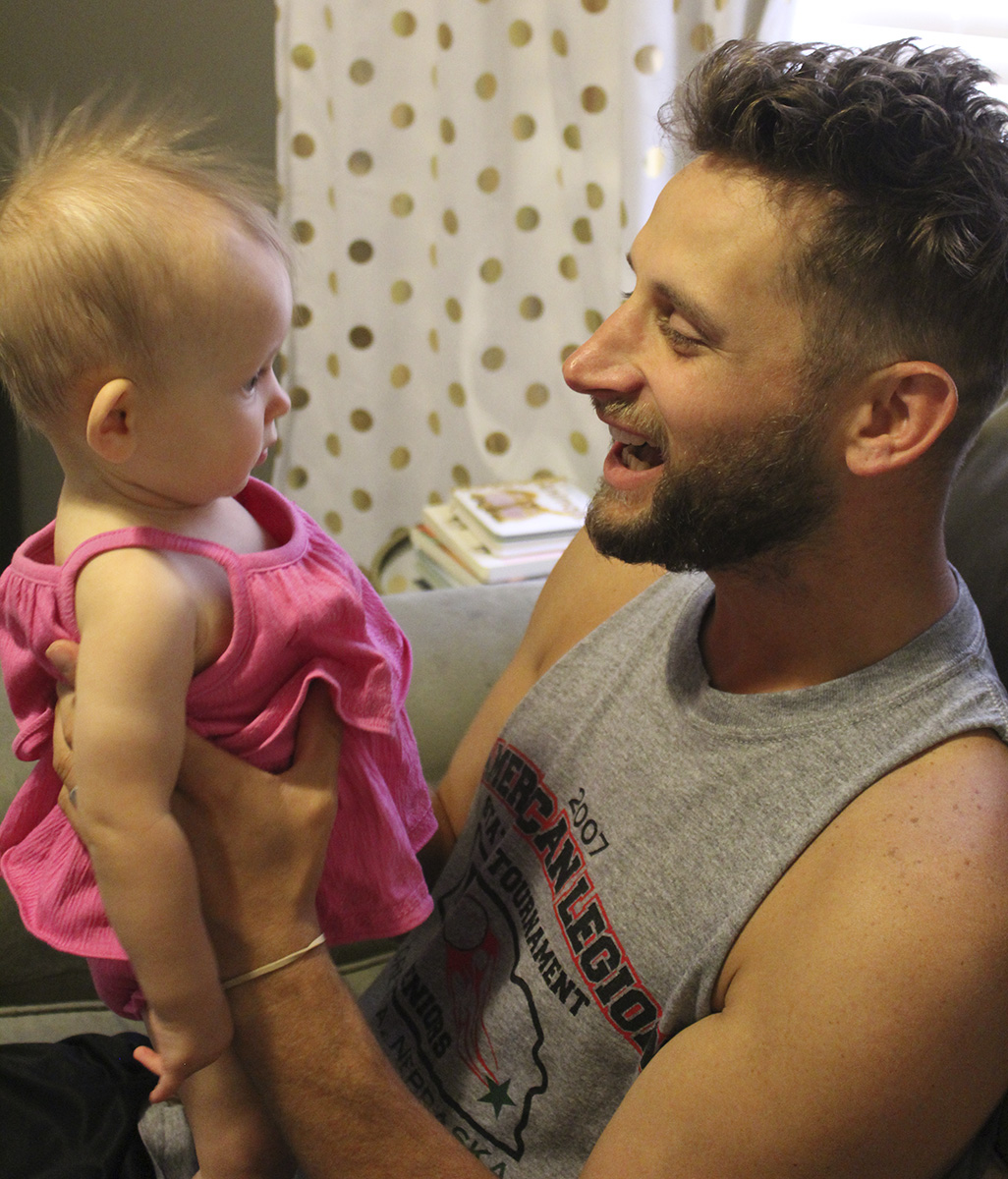
By Leanne Manning, Extension Educator, Saline County
Do you feel uneasy about talking with a baby because you fear they can’t understand what you’re saying? Fear not, as brain research shows us that talking with infants is important in helping their brains develop, and in learning about language and communication, all before they can really understand the meaning of the words being said.
The more adults speak with infants, the more neural connections, or synapses, are formed. These connections need to be strengthened by repeated exposure to listening to language or else the brain will prune away the unused connections. “Use it or lose it” is the phrase to remember. Here are some ideas for making the most of time spent chatting with an infant:
Talk about the baby’s actions as they move. “Oh, I see you are crawling right along. Soon you will reach me!”
• Verbalize feelings. Put their feelings into words to help them learn to label what they are feeling and later when they begin to speak to use words to describe their emotions. “Something has made you angry because you are all red in the face and crying.” “You look so happy with that big smile on your face. You really like your stuffed toy don’t you?”
• Provide guidance to help babies achieve something. “I can see you want that toy by your blanket. You can reach out your arm and grab it.”
• Build positive relationships with the baby. The best way to do this is to use “serve-and-return interactions” with the child. When an infant cries, babbles or coos, you can respond with an action or words that let them know they have been heard. For example when a baby says, “Baa!” You can repeat that sound “Baa!” This simple serve-and-return interaction helps build the child’s brain and puts in place a strong base for future learning.
Some other tips for building on serve-and-return interactions are to:
• Notice what the child is looking at.
• Notice facial expressions.
• Offer comfort and hugs when needed.
• Take turns talking, being sure to wait for the child to respond.
• Practice noticing when the child is ready to move on or end the activity.
When you take the time to converse with infants, speaking to them, then stopping to listen to them, and then speaking again, this is demonstrating how communication works. It also helps parents and providers build strong attachments with infants, something which is crucial for all infants to survive and thrive.
Infants who have at least one strong, secure attachment with a caring adult, will be more successful at building and learning skills that will help them throughout their lives such as self-regulation and academic achievement.
By taking small moments of time throughout the day to chat with your baby, you are building your child’s brain and setting them up for a lifetime of learning and acquiring skills that will help them deal with life’s trials and triumphs.
Sources:
• http://extension.org
• http://developingchild.harvard.edu
FOR MORE INFORMATION
Nebraska Extension has the following NebGuides at http://extensionpubs.unl.edu:
• Promoting Young Children’s Early Language and Prereading Skills with Dialogic Reading (G2317)
• The Power of Family Literacy (G1985)
• Ages and Stages: Infant (0–12 Months)(G2103)
• Relationships: The Heart of Language and Literacy (G1987)